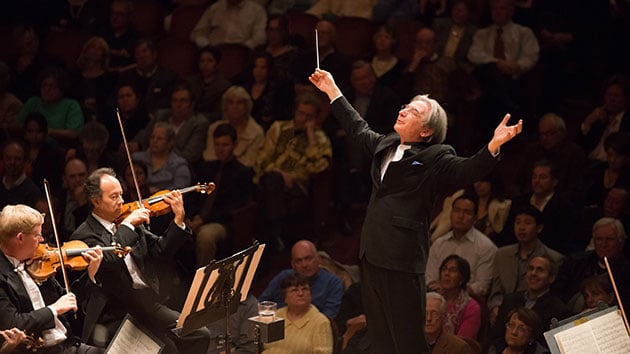
Usually, a famous composer’s greatest works are frequently performed, unless the name is Hector Berlioz. His largest works are so huge and expensive that performing them is a strain on even the biggest organizations. Thankfully, the San Francisco Symphony bit the bullet and took on Berlioz’s Romeo and Juliet, on Friday, for their season finale.
Romeo and Juliet is a curious paragon of a piece and musically challenging. But the musicians were recording live and, from the opening notes, Michael Tilson Thomas conducted with the assurance of someone who begins a high-stakes business meeting by stating that success is the only option.
The composer called the piece both a “dramatic symphony” and a “choral symphony.” You could also call it “character music,” meaning it synthesizes qualities associated with ordinary instrumental music on the one hand (hence Berlioz’s insistence on the term “symphony”), and “program music” that tells a story, on the other. But pigeonholing the work is tricky, in the same way that the 19th century found Berlioz’s inspiration, Beethoven’s Ninth, difficult to deal with.

There are three soloists. Sasha Cooke, mezzo-soprano, and Nicholas Phan, tenor, established the narrative near the beginning. Near the end, bass-baritone Luca Pisaroni played Friar Laurence. All three were outstanding; Cooke’s lines were especially gorgeous. I often found myself ignoring the projected supertitles because the sound was so enthralling.
Arguably, one way Romeo and Juliet conjures Beethoven’s precedent is that both composers used the chorus more to inject humanity into their orchestration than to convey clearly comprehensible words.
In short, while it’s easy to map a narrative onto this music, it’s also easy to get caught up in its sheer sound. Romeo and Juliet paradoxically exudes the refined, balanced exuberance of a work like Mendelssohn’s “Italian” Symphony while simultaneously adumbrating the unbridled expressivity of Wagner’s music dramas. (Not coincidentally, Wagner received press comps for the first performance.)
The work is in seven numbers. In the second, a magnificently lavish oboe melody represented a Romeo who is lonely and longing for love. Later, the music depicted the Capulets’ ball where Shakespeare’s star-crossed lovers meet. Indeed, listening was like watching two people who are oblivious to a convivial crowd because they only have eyes for each other. Except these two people were not two people: The entire orchestra depicted the characters, as though the musicians were working double duty both to accompany a ballet and to dance a pas de deux.
Judging against everything he ever composed, the ensuing Scène d’amour (Love scene) was Berlioz’s favorite music. The man had good taste.

While no written description can do this wordless music justice, Berlioz’s Love scene plays out like this: It begins by painting a backdrop of a balmy summer night. Then the cellos present the primary theme representing the two lovers. Like the moments leading up to — and ultimately concluding with — a jaw-dropping, mind-blowing, heart-stopping, earth-shattering, life-changing first kiss, the number culminates with a buildup of tension followed by a warm cadence that brings release.
The Queen Mab about whom Shakespeare’s Mercutio rants is part whimsical fairy and part wicked witch. Berlioz’s ensuing “Queen Mab” Scherzo depicts her — and also the history of symphonic scherzos – by skirting between capriciousness and something seriously sinister, such as Juliet faking her own death.
Having just heard the Love scene, the mood change here surprised. Listening was like getting out of your car after driving from the South Bay to San Francisco and being caught off guard by the temperature drop, then realizing in immediate hindsight that you should have expected it all along.
The next two numbers depicted Juliet’s funeral cortege and the lovers’ deaths. The orchestra conveyed both the violence of death and the joy intrinsic to the idea of reunification with one’s beloved in an afterlife. But mostly, the music conveyed violence.
Again like Beethoven’s Ninth, Berlioz used voices so heavily in his Finale that he conceded it “fell into the realm of opera.” Dramatically, it ended with an “Oath of Reconciliation” between the dueling families. Musically, the enormous collaboration between the Symphony and Chorus made for an apposite end to their joint season.
One silver lining for Shakespeare’s protagonists is that, despite their tragically short lives, they felt a love more intense than many people ever do. (Given his own obsessive love for Harriet Smithson — the Irish actress he pursued, eventually married, and then abandoned — such intense love surely resonated with Berlioz.) And one upside to being rarely performed is that Berlioz’s Romeo and Juliet remains undefiled by the commercialization of culture. It remains an unspoiled gem.



